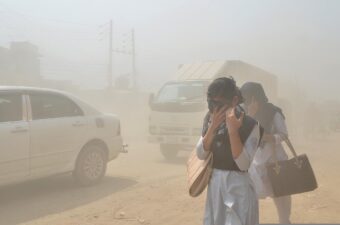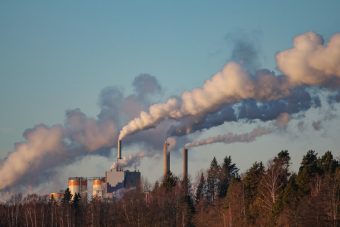
The Council presidency and the European Parliament’s representatives reached a provisional political agreement on a proposal to set EU air quality standards to be attained with the aim of achieving a zero-pollution objective, thus contributing to a toxic-free environment in the EU by 2050.
It also seeks to bring EU air quality standards in line with the World Health Organization (WHO) recommendations.
Strengthening air quality standards
With the new rules, the co-legislators agreed to set out enhanced EU air quality standards for 2030 in the form of limit and target values that are closer to the WHO guidelines and that will be regularly reviewed. The revised directive covers a host of air-polluting substances, including fine particles and particulate matter (PM2.5 and PM10), nitrogen dioxide (NO2), sulphur dioxide (SO2), benzo(a)pyrene, arsenic, lead and nickel, among others, and establishes specific standards for each one of them. For instance, the annual limit values for the pollutants with the highest documented impact on human health, PM2.5 and NO2, would be reduced from 25 µg/m³ to 10 µg/m³ and from 40 µg/m³ to 20 µg/m³ respectively.
The provisional agreement provides member states with the possibility to request, by 31 January 2029 and for specific reasons and under strict conditions, a postponement of the deadline for attaining the air quality limit values:
- until no later than 1 January 2040 for areas where compliance with the directive by the deadline would prove unachievable due to specific climatic and orographic conditions or where the necessary reductions can only be achieved with significant impact on existing domestic heating systems
- until no later than 1 January 2035 (with possibility to extend it by two more years) if projections show that the limit values cannot be achieved by the attainment deadline.
To request these postponements, member states will have to include air quality projections in their air quality roadmaps (to be established by 2028) demonstrating that the exceedance will be kept as short as possible and that the limit value will be met by the end of the postponement period at the latest. During the period of postponement, member states will also have to regularly update their roadmaps and report on their implementation.
More:
- INDUSTRIAL AIR POLLUTION AND ITS DETRIMENT TO THE ENVIRONMENT, CLIMATE AND HEALTH
- COSTS OF INDUSTRIAL POLLUTION FROM LARGEST FACILITIES DECLINE IN EUROPE BUT REMAIN AT TWO PER CENT OF EU GDP
- AIR POLLUTION LEVELS ACROSS EUROPE STILL NOT SAFE, ESPECIALLY FOR CHILDREN
Air quality roadmaps, plans and short-term action plans
In cases where a limit or target value is exceeded or there is a concrete risk of exceeding the alert or information thresholds for certain pollutants, the text requires member states to establish:
- an air quality roadmap ahead of the deadline if between 2026 and 2029 the level of pollutants exceeds the limit or target value to be attained by 2030
- air quality plans for areas where the levels of pollutants exceed the limit and target values set out in the directive after the deadline
- short-term action plans setting out emergency measures (e.g. restricting the circulation of vehicles, suspending construction works, etc.) to reduce the immediate risk to human health in areas where the alert thresholds will be exceeded

The co-legislators agreed to include softer requirements for establishing air quality and short-term action plans in cases where the potential to reduce certain pollutant concentrations is severely limited due to local geographical and meteorological conditions. When it comes to ozone, in cases where there is no significant potential to reduce ozone concentrations at local or regional level, the co-legislators agreed to exempt member states from establishing air quality plans, on the condition that they provide the Commission and the public with a detailed justification for such exemption.
Review clause
The provisionally agreed text calls on the European Commission to review the air quality standards by 2030 and every five years thereafter, in order to assess options for alignment with the recent WHO guidelines and the latest scientific evidence. In its review, the Commission should also assess other provisions of the directive, including those on postponement of the attainment deadlines and on transboundary pollution.
Based on its review, the Commission should then put forward proposals to revise air quality standards, include other pollutants and/or propose further action to be taken at EU level.
Access to justice and right to compensation

The proposed directive sets out provisions to ensure access to justice for those who have a sufficient interest and want to challenge its implementation, including public health and environmental NGOs. Any administrative or judicial review procedure should be fair, timely and not prohibitively expensive, and practical information on this procedure should be made publicly available.
Under the new rules, member states would have to ensure that citizens are entitled to claim and obtain compensation where damage to their health has occurred as a result of an intentional or negligent violation of the national rules transposing certain provisions of the directive.
The text as amended by the co-legislators also clarifies and expands the requirements for member states to establish effective, proportionate and dissuasive penalties for those who infringe the measures adopted to implement the directive. As applicable, they will have to take into account the severity and duration of the infringement, whether it is recurrent, and the individuals and environment affected by it, as well as the real or estimated economic benefits derived from the infringement.
Source: European Council
